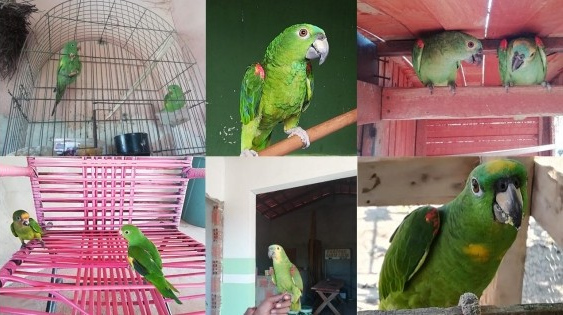Research funded by the Loro Parque Fundación reveals that most of the catch is not destined for international trade, but for rural households, fuelling a cycle of possession and replacement that puts the survival of many species at risk.
Recent research published in the journal Biological Conservation has uncovered a little-known reality: illegal parrot trafficking in Bolivia is mostly driven by demand for pets within local communities themselves, rather than by domestic or international trade, as has traditionally been assumed.
The study, funded by Loro Parque Fundación, shows that between 300,000 and 500,000 parrots are illegally captured each year in Bolivia. Of these, only 12% make it to illegal urban markets such as Los Pozos in Santa Cruz de la Sierra. The vast majority stay in rural areas, where they are kept as pets by the people who capture them.
CSIC (Consejo Superior de Investigaciones Científicas) researchers José Tella and Pedro Romero, among others, developed an innovative methodology that combines the monitoring of illegal urban markets with fieldwork in the parrots’ areas of origin. Through informal interviews in more than 150 communities, they were able to estimate the real fate of the captured birds. The results are compelling: the number of parrots poached for personal use far exceeds the volume traded both illegally and legally. In fact, more parrots are captured in a single year than Bolivia has legally exported since 1979.
One of the most worrying findings is the high rate of pet turnover: parrots often die, escape or are sold within months of capture, due to poor care conditions, inadequate diet and predation by pets . This cycle perpetuates continuous trapping, as owners tend to easily replace lost parrots, often at no financial cost.
The ecological impact is alarming. Among the 35 species identified in the study, several are classified as threatened or critically endangered by the IUCN. Sustained mass trapping, even for non-commercial purposes, represents a serious threat to their survival. One notable case is the Bolivian endemic scarlet-fronted macaw, whose wild population numbers just 800-1200 individuals. The study documented 60 individuals of this species on the market and 113 more as pets in rural households.
This study underlines the importance of approaching illegal trade from a socio-ecological perspective, considering not only markets, but also local customs and cultural dynamics that fuel the demand. By supporting initiatives of this kind, Loro Parque Fundación actively contributes to the generation of scientific knowledge essential for designing realistic and effective conservation strategies.


